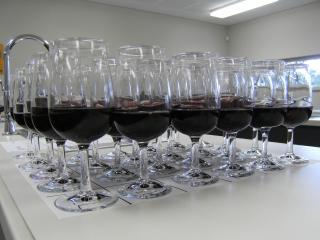Local winemakers have recently lent their tasting expertise to research by the Department of Agriculture and Food.
Department researcher Richard Fennessy is investigating the influence of climate on the effectiveness of pre-fermentative cold maceration (cold soak) on red wine varieties.
He recently ran a wine sensory panel with winemakers at the Margaret River Education Campus.
The panel ‘blind’ tasted 24 wines from the Swan Valley and Mount Barker that consisted of Shiraz, Cabernet Sauvignon and Merlot. These were made at the department’s wine laboratory in Bunbury.
Mr Fennessy said the sensory analysis would complement chemical analysis to assess and compare the wines and identify differences between the treatments.
“The sensory analysis looked at specific attributes such as colour, aroma, palate and overall quality,” he said.
This recent panel follows an identical sensory assessment of the wines six months earlier to determine if the character of the wines has changed over this time.
“The initial panel found the quality of Swan Valley Shiraz to be negatively affected by a cold soak but interestingly the Mt Barker wines were no different between treatments,” he said.
“Swan Valley Cabernet Sauvignon quality was markedly improved by a cold soak, the Mt Barker version had higher dark berry aroma after a cold soak.
“The wine style of Mt Barker Merlot was found to be influenced by the treatments. Without a cold soak the wines were very fruity and with a cold soak they were deemed more complex.
“The only difference the panel noted on the Swan Valley Merlot was an improvement in colour after a cold soak.”
Data from the latest sensory testing will be collated and examined.
‘Cold-soak’ is a technique applied after the grapes are crushed and before fermentation begins. The crushed grapes are held in contact with the skins for an extended period at cold temperature to improve extraction of anthocyanins (colour), flavours and tannins. The objective is to improve the quality and taste of the resultant wine.
Cold soak is practised regularly in making premium red wines but researchers have little understanding of the relation and merit of this technique based on specific climates and varieties.
The aim of the research is to determine its economics and effectiveness under both hot and cool climatic conditions when matched with the three most widely planted red wine varieties in Australia – Cabernet Sauvignon, Cabernet Merlot and Shiraz.
The research is funded by the Australian Grape and Wine Authority (AGWA).

Media contact: Jodie Thomson/Katrina Bowers, media liaison +61 (0)8 9368 3937
